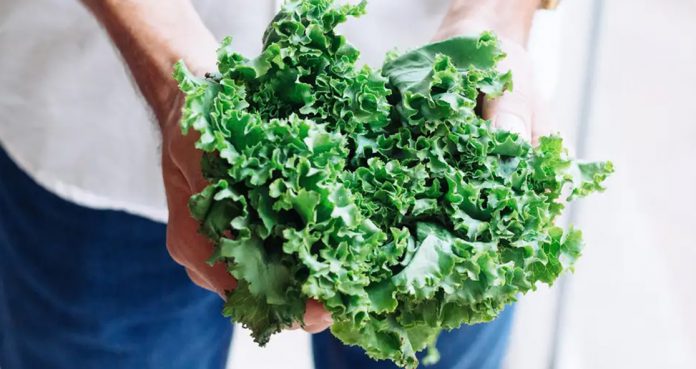Kale is a popular vegetable in the US, which is consumed in many forms such as a staple item to garnishing ingredients in salads, smoothies, dips, and other dishes. It has gained its popularity for less than a decade. It is also found common in packaged food items like chips, popcorn or beverages like soda.
According to the Environmental Working Group (EWG), kale is one of the highly pesticide-contaminated vegetables in the US. It is also listed among the most contaminated food products guide named as “Dirty Dozen”.
Kale ranks third this year, which comes after strawberries and spinach. The update is potentially worrying for salad fans, but it could also throw effects on America’s agricultural workers as kale samples contained traces of weed-killer pesticide.
After the tests conducted by the US Department of Agriculture in 2017 on kale, the EWG found that there are more than five types of pesticides contained in the kale samples even after washing them thoroughly.
As per the investigation, over 90% of the samples were contaminated with noticeable levels of two different pesticides, and the one with the highest contamination had 18 types of pesticide remains.
Studies have found the relation between certain pesticides and diseases like cancer, diabetes, infant autism, and attention deficit hyperactivity disorder (ADHD) in kids as well as teenagers; nevertheless, scientists are figuring out the connection between pesticides and human ailments.
The EWG found that 60% of the samples of kale found traces of herbicide called DCPA (Dacthal). DCPA was used as a weed-killer for vegetables, strawberries, beans, and cotton in the US.
By 2005, the US manufacturers of DCPA had suspended many of its uses, since it was leaching into groundwater. Even the European Union banned the use of herbicide on crops. Currently, sweet potatoes, eggplant, turnips, and kale are the only vegetables that contain Dacthal in the US.
The EPA has found that Dacthal could result in cancer and so listed in the possible carcinogen based on a study of 2 years. This herbicide is also responsible for many diseases like thyroid hormone pathways, neurological effects like declined motor activity and liver tumors in rats, but not tested on humans.
According to EWG analysis, 30% of the kale samples contained two insecticides namely bifenthrin and cypermethrin, which are classified as possible human carcinogens as per the studies conducted on mice. Excessive exposure to these chemicals causes symptoms such as headaches, nausea, and certain neurological issues like tingling and numbness.
Farmers are exposed to higher quantities of such pesticides and thus are more harmful to farmers. Those who grow kale in their farm run the risk of coming into direct contact with Dacthal, even the workers spraying pesticides on kale crops are prone to the harmful effects of pesticides.
The EPA warns the risk associated with the respiratory and skin contact with Dacthal. A study conducted in 2017 found that farmers’ are at the risk of non-Hodgkin’s lymphoma (lymphatic system cancer) after the long term exposure to certain pesticides.
About 10,000 to 20,000 agricultural workers get affected with pesticide poisoning every year, according to the EPA’s estimates. The EPA stated that “risks to workers still exceed EPA’s level of concern.”
Apart from these facts, there is a lot more evidence showing the health benefits of the vegetable. A cup of raw kale gives you 200% of the daily requirement of vitamin A and approximately 700% of your allowance of vitamin K per day. It is full of vitamins like B6, calcium, vitamin C, and potassium.
Cruciferous vegetables like kale have been proved to protect against certain types of cancer. It is possible in the future that scientists could find out new health risks related to pesticides present in food. The farmers and agricultural workers may be at the highest stake of consequences than its effects on consumers.























